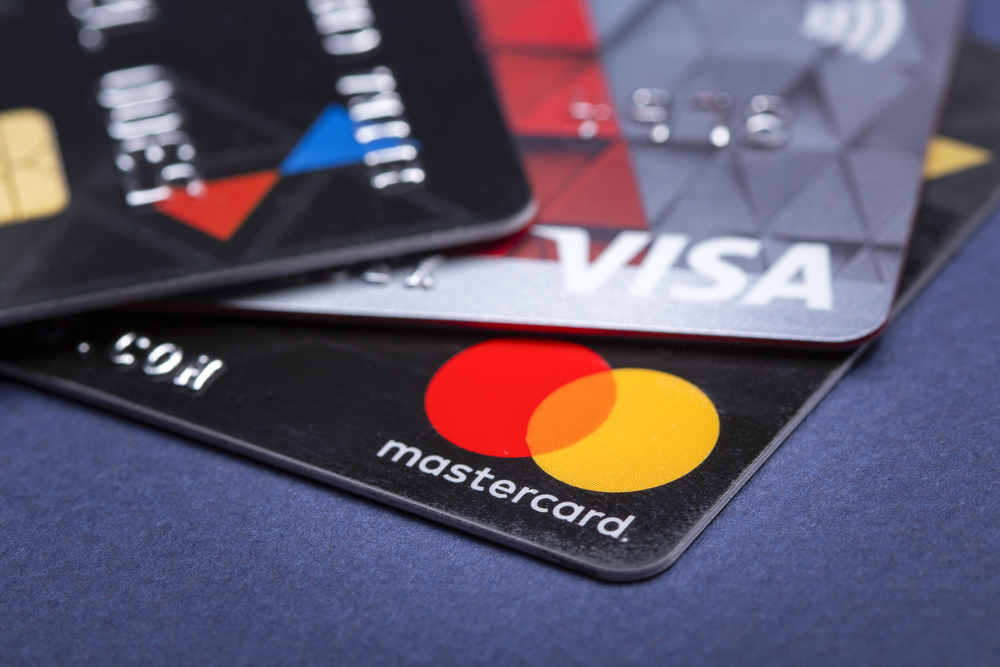
Choppy Waters Ahead? Recession Fears Mount For High-Risk Merchants Ahead Of Q4 Holiday Shopping Period
Oct 2, 2019
The 2019 holiday season is almost here. Are you ready to rake in the sales dollars?
More buying happens in the Q4 holiday shopping season than at any other point during the year. This makes it an opportune time for high-risk merchants to cash in on the consumer shopping spree.
From Black Friday deals all the way through to Christmas and Boxing Day, merchants across a range of industries are looking to grab a slice of this over-sized consumer-spending pie.
But, despite records last year, the outlook is certainly a lot less rosy this time around. Fears of a recession in the first half of 2020 (which may creep forwards into the back end of 2019) have spooked merchants who depend on this time of year to flourish and prosper.
Recession fears aside, the increased sales over the next three months will open the door to fraud, chargebacks, and refunds.
No company wants the busiest time of year to negatively impact their merchant account or other payment methods. So here are several tips to reduce risk and recession-proof your Q4 sales this holiday season.
Global recession fears heading into Q4 2019
What happened in late August 2019 has spooked economists and financial analysts across the globe. The US bond market displayed an inverted yield curve on 2-year and 10-year bonds for the first time since 2007.
What does that mean?
It describes the situation whereby investors can receive higher yields on short-term debt (2-year bond) than on long term debt (10-year bond). This is usually taken as a sign that long-term prospects for the economy are bleak. Thus, a recession is likely on the horizon.
Why do financial experts care so much about a yield curve inversion?
Well, every yield curve inversion has been shortly followed by a recession over the course of the the last 70 years. So, it’s fair to say that it’s an accurate predictor of future market conditions.
The negative headlines associated with a potential impending recession may keep wallets in pockets for longer when it comes to Q4 spending.
However, it’s not all doom and gloom. A yield curve inversion for 2-year and 5-year bonds in late 2018 wasn’t enough to stop a 2.8% year-on-year rise in consumer spending for Q4 2018. Proving that the fourth quarter is a great time to capitalize on higher consumer spending.
Prepare your business for the Q4 spending surge
Merchants are often unprepared when it comes to the uptick of sales during the holiday shopping period. To succeed, the entire sales cycle must have support to cope with the increase in demand.
One element out of sync can bring the whole operation crashing down. Also, merchant account termination can happen if fraud and risk go above acceptable card network levels.
Visa has recently revised their risk profile for merchants. As a high-risk merchant, you may be vulnerable to recession fears, as items you sell are deemed luxury or impulse buys. So, be prepared!
Over the next 30 days, here’s what you need to be paying attention to as a medium and high-risk merchant. These four points will ensure a profitable Q4 with great profits and minimal losses due to fraud.
1. Website
Your website’s functionality can make or break an entire transaction funnel. In today’s digital age, multiple languages and currency options are a must.
And yes, it’s important to ensure that desktop versions of the website function properly. Test and review each browser to ensure your website looks good on each one.
Special attention must be paid to mobile versions too (in various formats as screens can vary widely between devices). Mobile search has overtaken desktop search for the first time, and when it comes to online retail, mobile traffic accounts for 67% of sales in Europe and 59% of sales in the US. Not having seamless mobile functionality could see merchants lose out on critical sales volumes.
Finally, both your desktop and mobile checkouts should be as simple as possible and secure with an authentic SSL certification. This is especially key when using new anti-fraud tools like PSD2 and 3DS2 authentication protocols.
The less friction during the checkout process, the higher your conversion rates will be.
2. Order Fulfilment
Often merchants focus their efforts entirely on increasing sales without much thought given to fulfilment.
A total of 80% of holiday shoppers want their orders shipped on the day of purchase. Yet, only half of retailers are in a position to do so.
When purchased items don’t arrive on time customers rush to ask for refunds or chargebacks. High chargeback rates are the leading cause of US merchant account terminations. So, speed is everything when it comes to your fulfilment process.
Some customers may even be willing to pay more for an item if shipping times are better than from other merchants.
3. Anti-Fraud, Anti-Chargeback, and Anti-Theft Measures
The increase in sales during this period will increase the likelihood of targeted fraud, scams, and theft of data via cyber-attacks. Merchants need to keep a much closer eye on transactions during this period, especially higher-priced items susceptible to friendly and chargeback fraud.
Ways to counter this include blocking IP addresses from high-risk countries (even if it’s for a few months). If you can’t fulfill an item in a reasonable amount of time to a specific country, make sure to block it to avoid potential chargebacks from fraudsters or customers who get impatient waiting for their item. Merchants should also make address verification services (AVS) and CVV or CV2 mandatory on order pages.
Another tactic is using anti-fraud tools at the CRM or payment gateway level to suspend or cancel sales that look suspicious right away to protect your payment-processing channel. A daily review of sales can be helpful in diagnosing fraud. Enlisting the anti-fraud tools in the gateways provided by acquiring banks is a good idea to up security during this busy period, as is investing in your cyber defenses.
Many criminals wait for the chaos surrounding retail events (like Black Friday) to strike when merchants are too preoccupied to react effectively. They also wait for staff members to go on holiday so there is a weaker line of defense.
4. Customer Service
Buyer’s remorse often happens right after a sale. But, it is much more prevalent after the holiday period, particularly when credit card bills are received in January. Therefore, after-sales support takes on a new level of importance.
By providing excellent customer service with extended hours to accommodate your customers globally, high-risk merchants can keep those worrying chargeback ratios down to acceptable levels.
Have a generous refund policy to ensure your customers don’t feel pressured to chargeback. Consequently, now is the perfect time to revisit your terms and conditions. Make sure the number of days for a refund is unmistakably clear to buyers purchasing from you.
Give customers multiple ways to contact customer support. Make email addresses, ticketing systems, phone numbers and live chat bots easily accessible.
Is your business already recession-proof for the 2019 Q4 period?
Do you need to integrate a new payment option immediately for this holiday shopping season?
Email our sales team now to get a fast solution.
Diversifying payment methods is key to Q4 Success
Many businesses are happy to accept credit card orders. Yet, changing consumer attitudes are forcing merchants to provide alternatives. Recent research shows that debit cards and cash are still favored over credit cards by many consumers who want to avoid debt.
PayPal succeeds in this area because they allow consumers to debit their checking accounts for a purchase. By offering a range of payment methods, online vendors can stop losing out on customers who would prefer not to pay by credit card.
But the benefits of offering multifunctional checkouts don’t just extend to the consumer. Merchants wanting an alternative to PayPal for their high-risk offer should use direct debit options such as ACH processing and e-checks.
These payment methods can be lower cost thus maximizing your revenue and potentially leaving you with more volume for your high-risk merchant account. Better still, chargebacks are harder to initiate for customers using these payment methods. The benefit to you is that ACH and e-check will improve your payment processing ratios.
The holiday shopping season is about to begin. So, it makes sense to negotiate merchant account terms and alternative methods for payment now instead of in November. Leaving it too late will negatively impact both your sales and your existing merchant account status by opening yourself to potential threats.
Timing is everything, especially for supplement and info product offers
The holiday shopping season slowly inches ever closer to the end of summer each year. Therefore merchants should adapt accordingly.
Consumers are looking to Black Friday to secure early discounts before the festive sales season really get underway. Thus, companies selling either high-ticket luxury items or consumer electronics should make suitable preparations to avoid the aforementioned pitfalls of poorly planned fulfilment demand spikes.
But timing has an effect on all type of high-risk merchants, not just online retailers. Those who sell digital info products should push products during October and November, and then scale back in December.
Purchases made during the last month of the year often fall foul of January’s elevated chargeback rates, which can run at more than double the proceeding December’s. For the same reason, subscriptions should be avoided during the last few months of the year, or should be limited to three months or less from August onwards.
Try offering bundles of products for 3 or 6 months which will increase your sales value but lower the risk of chargebacks due to unwanted subscriptions and surprise charges on your customers’ credit card statement. Waiting for the New Year to launch (or re-launch) subscription services is a good idea since many customers are keen to try new supplement products and services during January as part of their New Year’s resolutions.
We will help you recession-proof your Q4
Financial analysts predict a global recession is potentially closer to fruition than first thought. It’s crucial for merchants to squeeze the most out of the upcoming Q4 holiday shopping season. Specifically for October and November depending on your product type.
With well-timed preparations, businesses will protect their revenue. They can also offer more than one payment option. Improving payment-processing capabilities reduces associated risks (such as chargeback fraud). High-risk merchants can begin to build enough trust with their providers to upgrade the terms of their merchant accounts.
Within the last ten years DirectPayNet has helped hundreds of medium and high-risk merchants transform their payment-processing funnel. Whether it’s credit card orders for consumer electronics, supplements, luxury goods or even info products, we are committed to your expansion and success.
We help entrepreneurs like you navigate fraud. We also help you manage your merchant account through sudden fraud events common during Q4.




